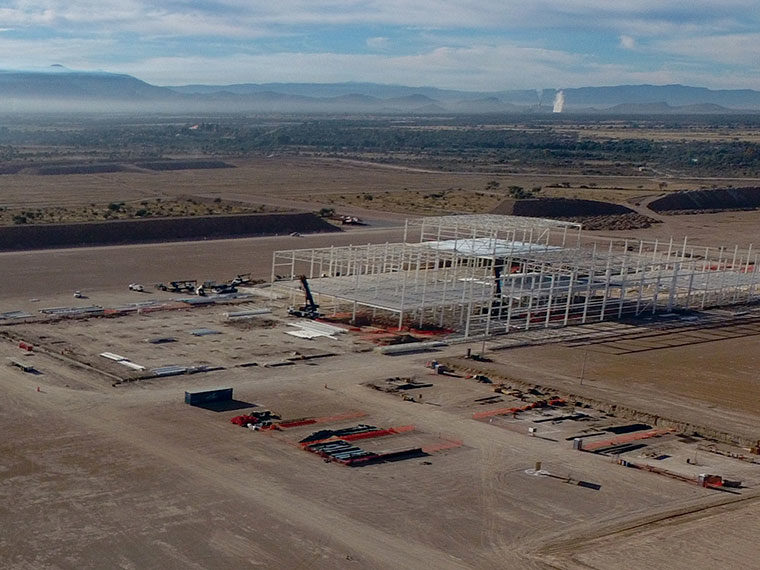Governments needn’t subsidize charging networks
For electric vehicles to become mainstream, they have to overcome a few obstacles. One is price — most models are still too expensive for the average car buyer. Even more important, potential buyers say, is a shortage of easily accessible places to recharge.
The U.S. and state governments provide subsidies to consumers to help make EVs more affordable and, recognizing that widely available charging is essential, also offer incentives to encourage businesses and homeowners to install charging stations.
Opt In to the Review Monthly Email Update.
The consumer subsidies have proved successful spurring EV sales, which have grown by two-thirds from 2021 to 2022 amid a tight auto market. A paper published in Production and Operations Management suggests those purchase subsidies can do double duty: Not only do they lower the cost to consumers, they also can speed installation of new charging networks more effectively than construction subsidies. Automakers, using customer rebates to raise prices, will invest those extra profits in charging stations as a way to further boost demand for their EVs.
“A direct purchase subsidy to consumers is by far the most powerful tool governments have to encourage EV ownership,” says UCLA Anderson’s Christopher S. Tang, one of the co-authors of the study, in an email interview. “Subsidizing charging station construction, either by building or with subsidy payments, is of secondary value.”
Working Toward an Electric-Driving Future
Governments and automakers have set ambitious goals for achieving an electric-driving future. The Biden administration wants electric vehicles to account for 50% of cars sold in the U.S. by 2030, while California has a goal of 100% by 2035. That’s a steep road to climb in less than 15 years — barely 6% of vehicles sold in the second quarter of 2022 were EVs.
“Range anxiety” contributes to the low uptake. Even though most car trips are less than 30 miles, U.S. buyers expect their vehicles to be able to take them much farther. Most EVs can travel between 200 and 300 miles on a charge, and those are best-case numbers. Fuel-efficient hybrids can easily go 500 miles and more between fill-ups.
But in most parts of the country, places to charge can be hard to find. The U.S. has about 46,000 public charging stations but only 6,000 fast chargers, which are needed to make long-distance trips practical. While overnight charging at home is possible for some, it’s more difficult for urban apartment dwellers and others who lack garages and driveways.
Automakers in the U.S. have been trying to address these concerns with their own charging programs. Tesla has installed nearly 1,500 supercharger stations in the U.S., while General Motors has said it would spend $750 million on new charging facilities. Volkswagen’s Electrify America unit plans to more than double the size of its U.S. and Canada charging network by 2025.
How Effective Are Government Subsidies?
The Inflation Reduction Act of 2022 provides tax credits for qualified purchases of electric vehicles, along with credits for consumers who add charging stations at home and for companies who install public stations in low-income neighborhoods. Still, if the U.S. meets its goal of having 35 million EVs by 2030, more than 2 million public chargers will be needed.
To examine how to meet this goal most efficiently, Tang and his co-authors — Fudan University’s Jiayi Joey Yu, Shanghai University’s Musen Kingsley Li and UC Berkeley’s Zuo-Jun Max Shen — use a theoretical model to compare the tools governments have to increase the number of charging stations.
One option is to provide financial incentives to private companies, which is what the U.S. and EU countries are doing. Another is for the government to build the stations itself. This is a path taken by China, which is making an aggressive push to have 40% of new vehicles sold to be electric-powered by 2030. The government-owned State Grid Corp. had built more than 93,000 charging stations in cities and along freeways by the end of 2019.
The model suggests that if construction costs are low and the target for EV adoption is fairly modest, no government action is necessary; automakers will build all the charging stations needed to meet demand. With moderate costs and demand targets, it’s cost-effective for the government to step in and build the additional charging stations needed. But as construction becomes more expensive and the government sets more ambitious adoption goals, subsidies become necessary.
If for some reason, purchase subsidies for consumers aren’t an option, then the government will provide financial incentives to automakers to build out charging networks. But when direct subsidies to consumers are available, subsidizing construction costs isn’t necessary. The purchase subsidies became a more powerful and cost-effective lever for encouraging EV adoption.
Featured Faculty
-
Christopher Tang
UCLA Distinguished Professor; Edward W. Carter Chair in Business Administration; Senior Associate Dean, Global Initiatives; Faculty Director, Center for Global Management
About the Research
Yu, J. J., Tang, C. S., Li, M. K., & Shen, Z. J. M. (2022). Coordinating Installation of Electric Vehicle Charging Stations between Governments and Automakers. Production and Operations Management, 31(2), 681–696.






